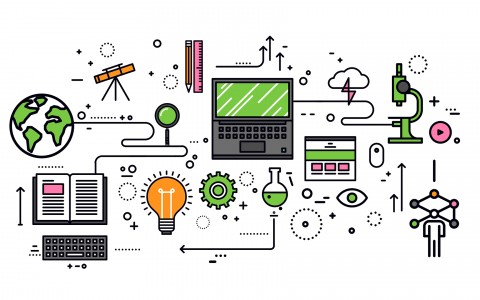
LRNT523 Unit 1 Assignment 1
There are a few cases where it is important to do calculations by hand, but these are small fractions of cases. The rest of the time you should assume that students should use a computer just like everyone does in the real world – Conrad Wolfram
With a MA from Cambridge University in the field of physics, natural sciences and mathematics and founder and CEO of computerbasedmath.org & Wolfram Research Europe he is an activist and a pioneer in the reform of mathematics in education and the necessary rebuild of the math curriculum (“Conrad Wolfram,” n.d.). He forces to break old habits of the traditional methods of teaching math and re-think, re-frame and re-engineer the way we train this compulsory curriculum in the 21st century.
We need math for 3 reasons: (Wolfram, 2010)
- For almost any job
- Everyday life
- Logical thinking
Stop teaching calculations and start teaching math – Conrad Wolfram
I selected Conrad Wolfram for my assignment as an innovator in the field of education because of his drive and belief in that if math could be more practical and less mechanical, it would become more appealing to students. Wolfram has become a major advocate for the use of computers and calculators in k-12 classrooms.
As it was contradictory to my perspectives, I was fascinated on how this all could make sense as an educator, instructional designer, corporate trainer, recruiter, parent, and life long learner.
He claims that there is this myth around you need to know the basics to do math the right way and that if you just get a computer to do it, it is just mindless button pushing, but if you do it by hand it is intellectual. (Wolfram, 2010). That’s exactly what I thought!
Now, there’s no denying getting to know the basics to give individuals working aptitude to do mental math is still important, however he claims the focus should not be around the calculation itself, as the calculation is simply the means to an end, and not the end. He suggests that writing out the equation on paper to get the right answer isn’t the way to do math, rather using a computer for the computation, which it has been created for, is used and take the focus off the equation itself and refocus on what is the real-world problem we are trying to solve.
Doing math in 4 easy steps: (Wolfram, 2010)
- Make sure to pose the right question; what is it we are tying to find out; what problem are we trying to solve?
- Take this real-world problem and create a math formula
- Allow the computer to compute the answer, rather than doing it manually on paper, get the computer to do it
- Take the math formula and ask did it solve the real-world problem, did it answer the question, can it be verified?
We encourage and want students to be content creators, not just the consumers of content (Wolfram, 2010). Math should be more practical and more conceptual and less mechanical and without the shift there will be deficiencies in the future skills of our workforce such as being imaginative, creative problem solvers, analytical and critical thinkers.
This is important as someone working in a corporate HR team not only recruiting, but implementing learning solutions to support the development of skills and knowledge to ensure a competitive and competent workforce.
Sites to visit for more information on Conrad Wolfram
References
Wolfram, C. (2010, November). Conrad Wolfram: Teaching kids real math with computers. Retrieved from https://youtu.be/60OVlfAUPJg
Conrad Wolfram. (n.d.). In Wikipedia. Retrieved October 10, 2018, from https://en.wikipedia.org/wiki/Conrad_Wolfram



